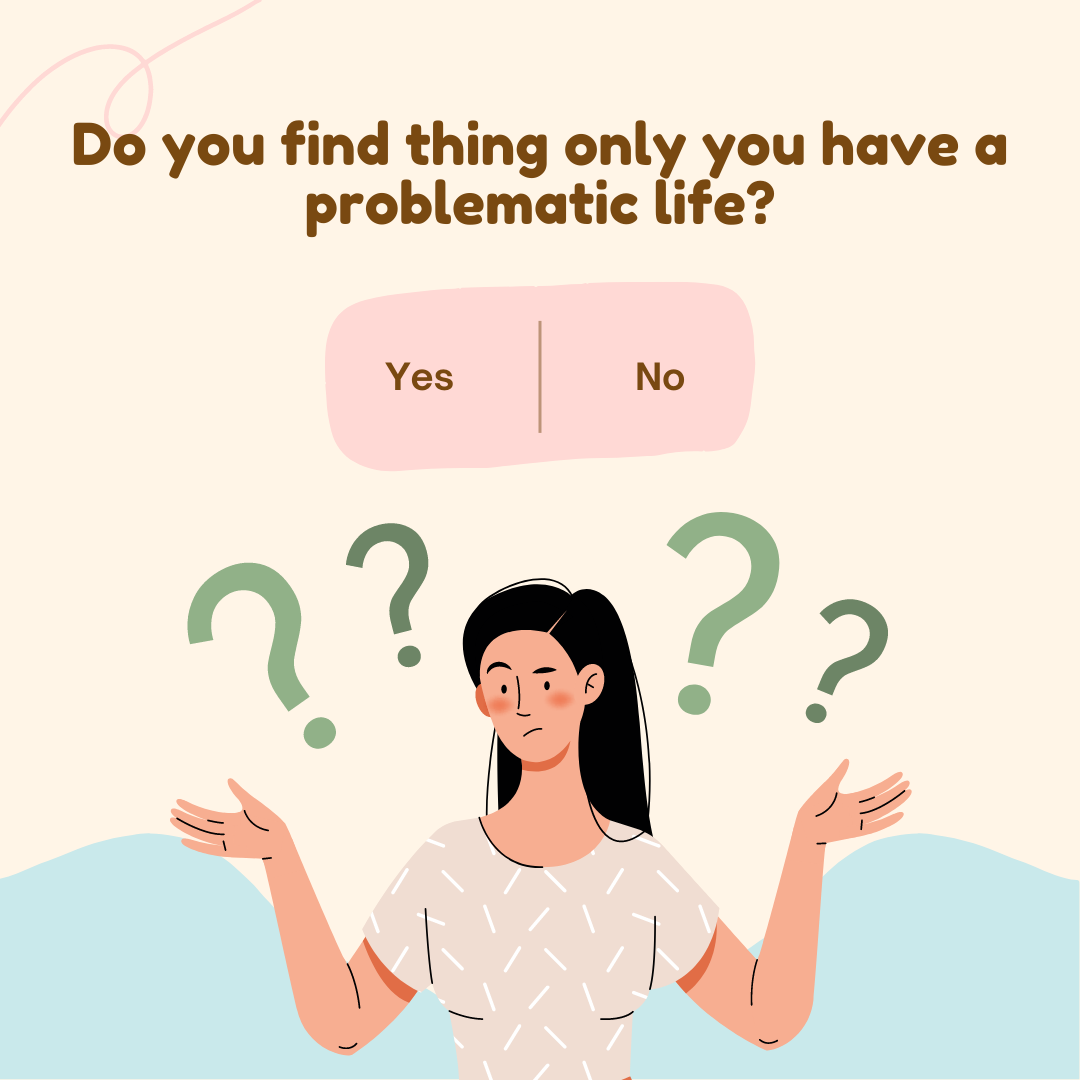Have you ever found yourself in a situation where you believe that your problems are the biggest problems in the world? You might feel that everything happens to you, and your life is the only sad and bad life. This way of thinking can be quite common, and it is often referred to as “personalization.”
Personalization is a cognitive distortion that occurs when individuals tend to interpret events in terms of their own life experiences and believe that they are the only ones facing difficult situations. This way of thinking can lead to a feeling of isolation, which can exacerbate negative emotions such as sadness, anxiety, and hopelessness.
There are several reasons why people tend to personalize their problems. For instance, past experiences, personal values, cultural and social conditioning, and cognitive biases can all contribute to this way of thinking. Additionally, in today’s social media-driven world, we are constantly bombarded with images and stories of people’s perfect lives, which can make us feel that our lives are inadequate and less than ideal.
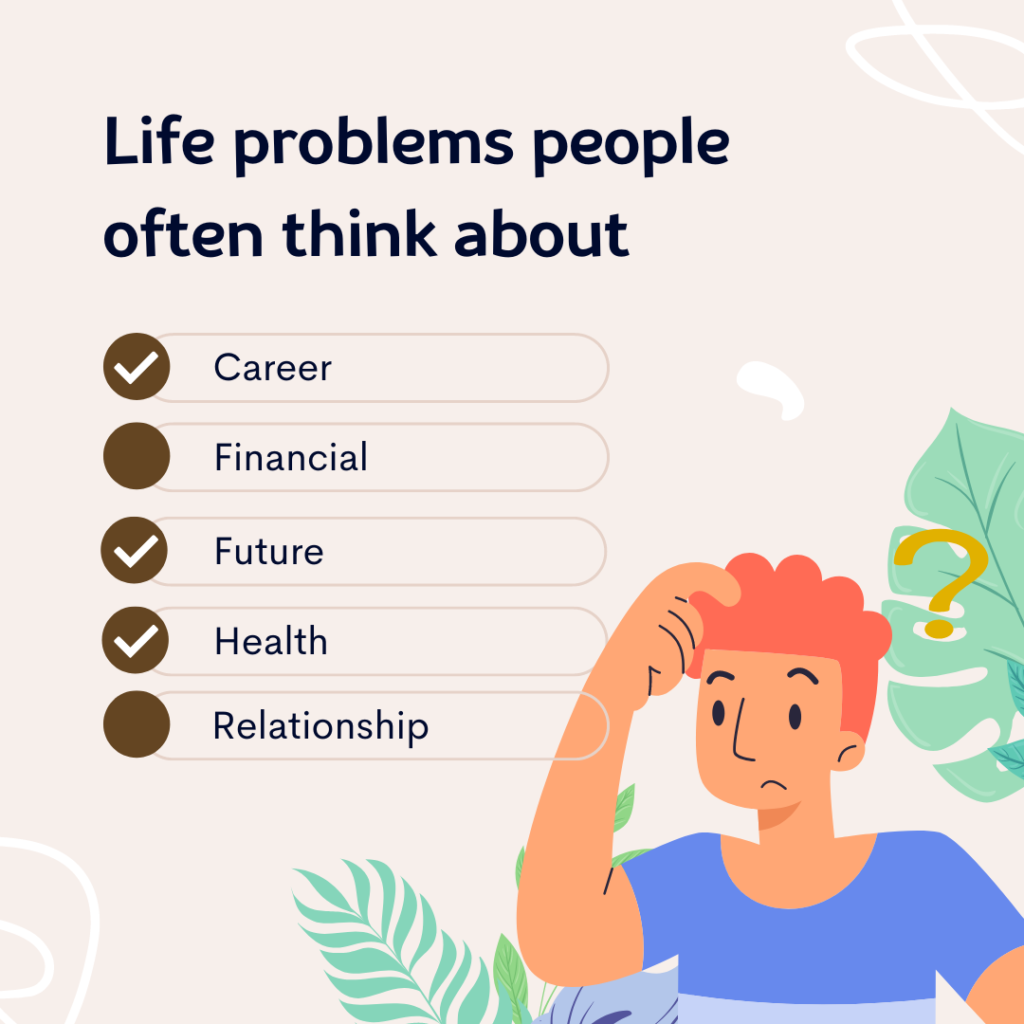
However, it is important to recognize that personalization is a distorted way of thinking that is not based on reality. The truth is that everyone faces challenges and difficulties in life, and it is how we respond to these challenges that determine our resilience and ability to overcome them. Here are some tips that can help you break free from personalization and adopt a more realistic and positive perspective:
- Challenge your thoughts: When you catch yourself thinking that your problems are the biggest problems in the world, challenge these thoughts by asking yourself if they are based on reality. Try to put things in perspective by asking yourself if your situation is truly unique or if others have faced similar challenges.
- Practice gratitude: One way to counteract personalization is to practice gratitude. Focus on the positive aspects of your life and appreciate the things that you do have. This can help you shift your focus from what you lack to what you have, which can improve your mood and outlook.
- Connect with others: When you feel isolated and alone, it can be helpful to connect with others. Share your thoughts and feelings with someone you trust, and seek out social support. This can help you gain perspective and realize that you are not alone in your struggles.
- Seek professional help: If you find that personalization is interfering with your daily life and causing significant distress, it may be helpful to seek professional help. A mental health professional can help you identify and challenge negative thought patterns and develop coping strategies that can help you overcome personalization and other cognitive distortions.
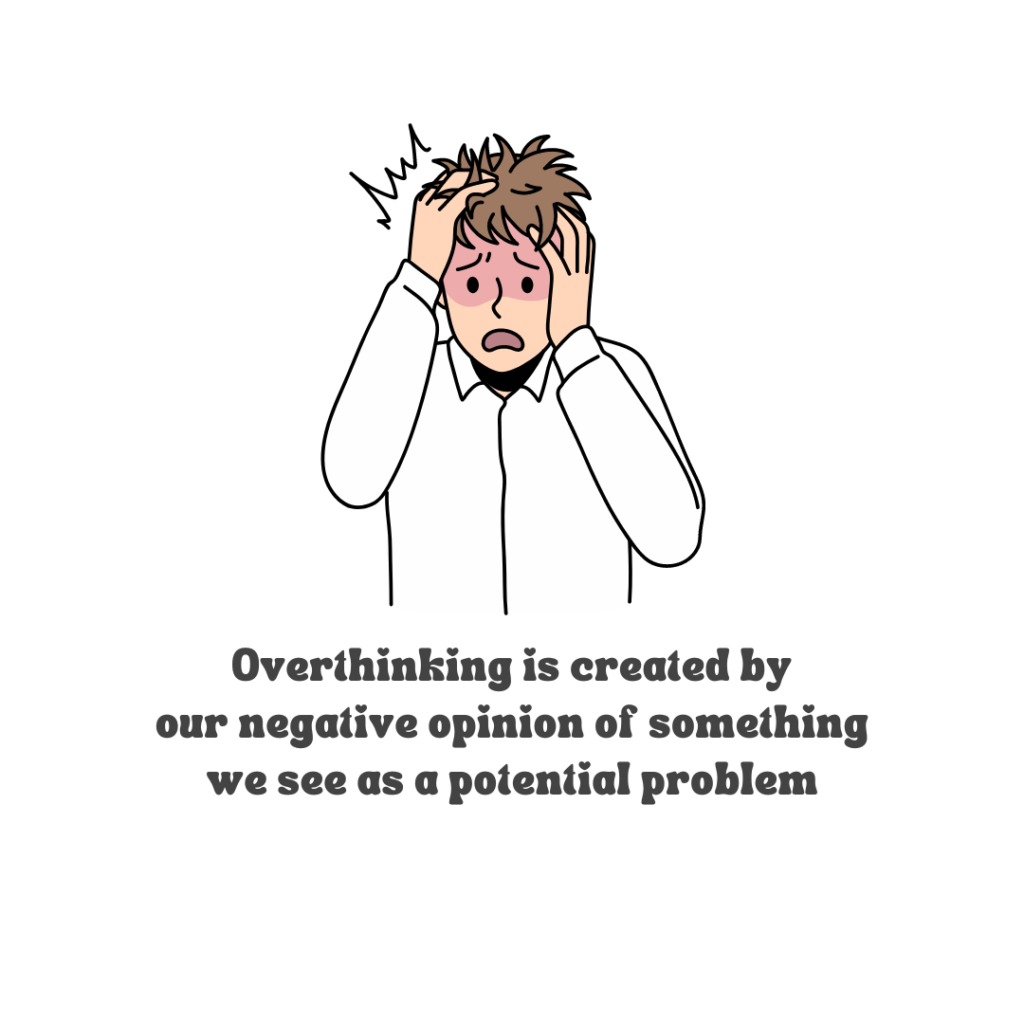
Life is full of ups and downs, and everyone goes through tough times at some point in their lives. However, when we are going through a difficult time, it can be easy to feel like we are the only ones facing challenges. This mindset, known as personalization, can cause us to overlook the fact that other people are going through similar or even worse situations. In this blog post, we will discuss some common scenarios where people tend to think that their problems are the worst and how we can gain a more realistic perspective.
- Health Problems
When we face health problems, it can feel like no one else is going through what we are experiencing. For instance, a person with chronic pain may feel like they are the only ones who have to endure such physical discomfort. However, it is important to remember that there are many people dealing with various health problems every day. Some may have conditions that are much more severe and debilitating, such as cancer or paralysis.
- Financial Problems
Financial difficulties can also make us feel isolated and hopeless. When we are struggling to make ends meet, it can be easy to think that we are the only ones dealing with financial problems. However, many people are struggling with money issues, such as debt, unemployment, and poverty. Some people may even be facing homelessness or hunger.
- Relationship Problems
When we are going through relationship problems, it can feel like we are the only ones experiencing such pain and heartbreak. However, breakups, divorces, and other relationship problems are common and happen to many people. Some people may have even experienced much worse situations, such as domestic violence or the loss of a loved one.
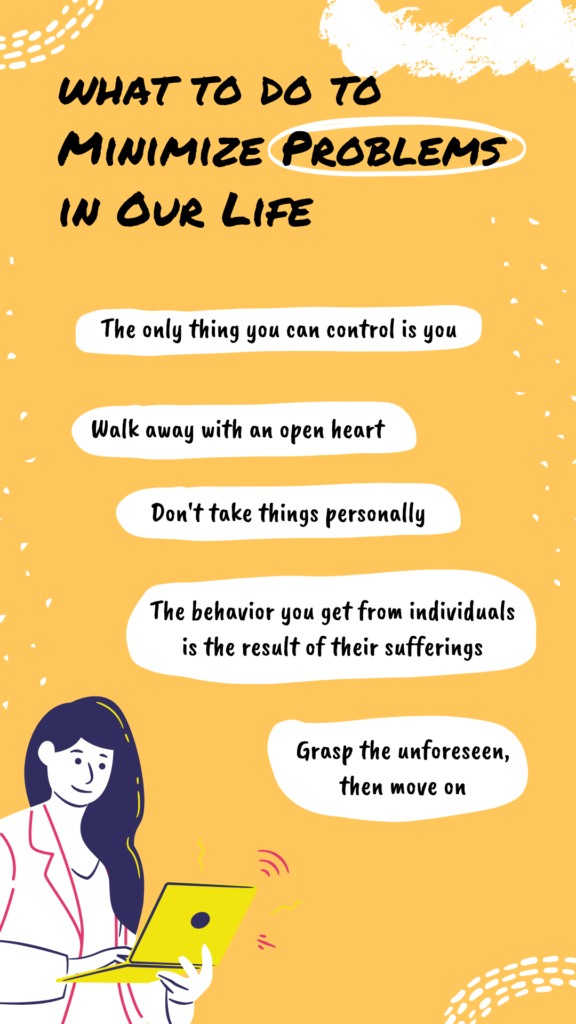
- Career Problems
Career setbacks, such as job loss or difficulty finding employment, can also make us feel like we are the only ones facing such difficulties. However, many people are struggling with similar issues, such as underemployment or job insecurity. Some may even be facing discrimination or harassment in the workplace.
It is important to remember that we are not alone in our struggles. By recognizing that other people are going through similar or even worse situations, we can gain a more realistic perspective and feel less isolated. Connecting with others who are going through similar struggles can also be helpful, as it can provide a sense of community and support. Seeking professional help, such as therapy or counseling, can also be beneficial in learning how to cope with difficult situations.
However, it is important to remember that every problem has a solution. It may take time and effort to find it, but with perseverance and a positive mindset, we can overcome even the most difficult obstacles.
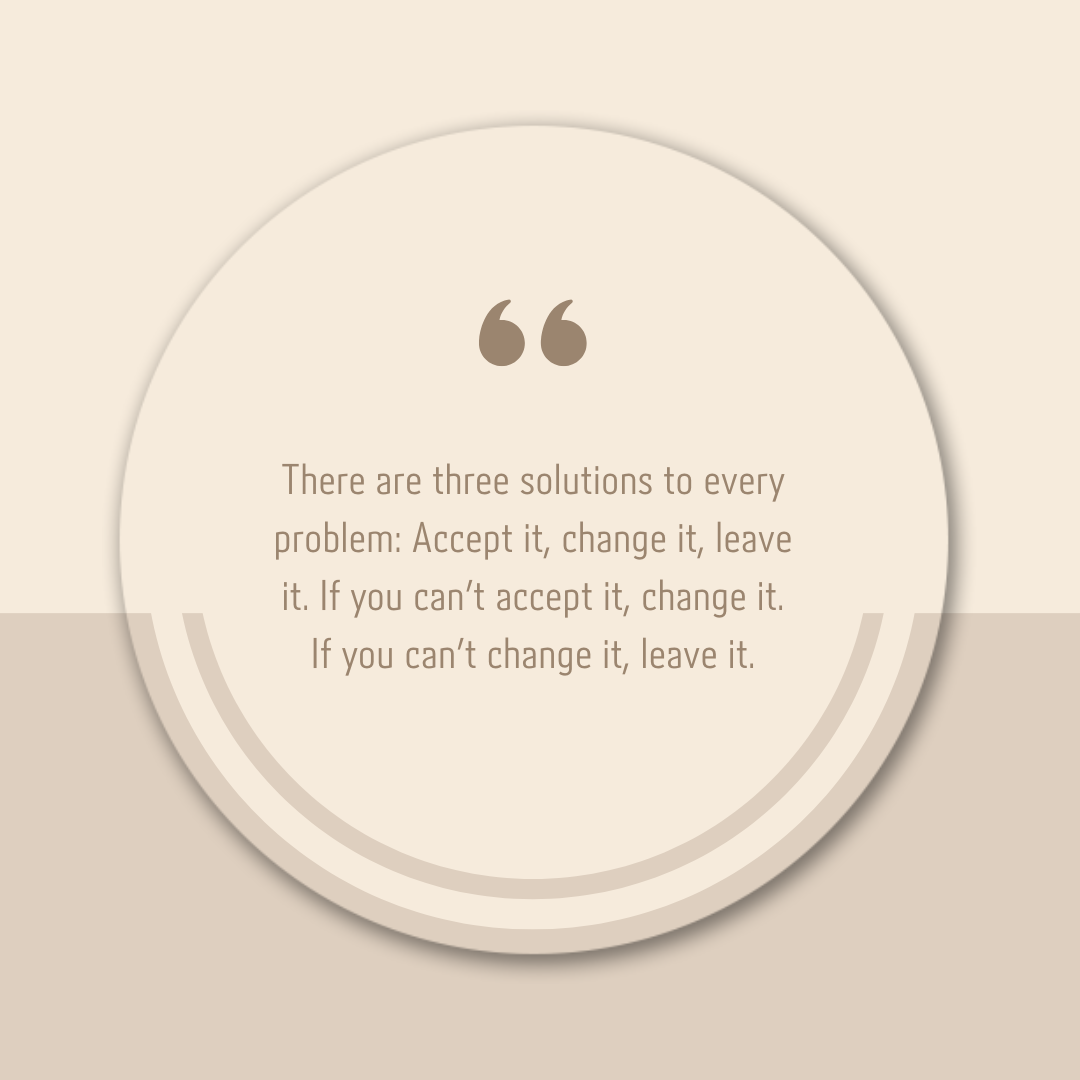
Here are some tips on how to focus on the solution and move forward when facing problems:
- Stay Positive
It is important to maintain a positive outlook and believe that there is a solution to every problem. Focusing on the positive aspects of our lives and the progress we have made can help us stay motivated and optimistic.
- Identify the Problem
To find a solution, we first need to identify the problem. Clearly defining the issue and understanding its root cause can help us develop effective solutions.
- Brainstorm Solutions
Once we have identified the problem, we can brainstorm potential solutions. It can be helpful to write down all possible solutions, even if they seem far-fetched or unrealistic. Sometimes, the most creative solutions can be the most effective.
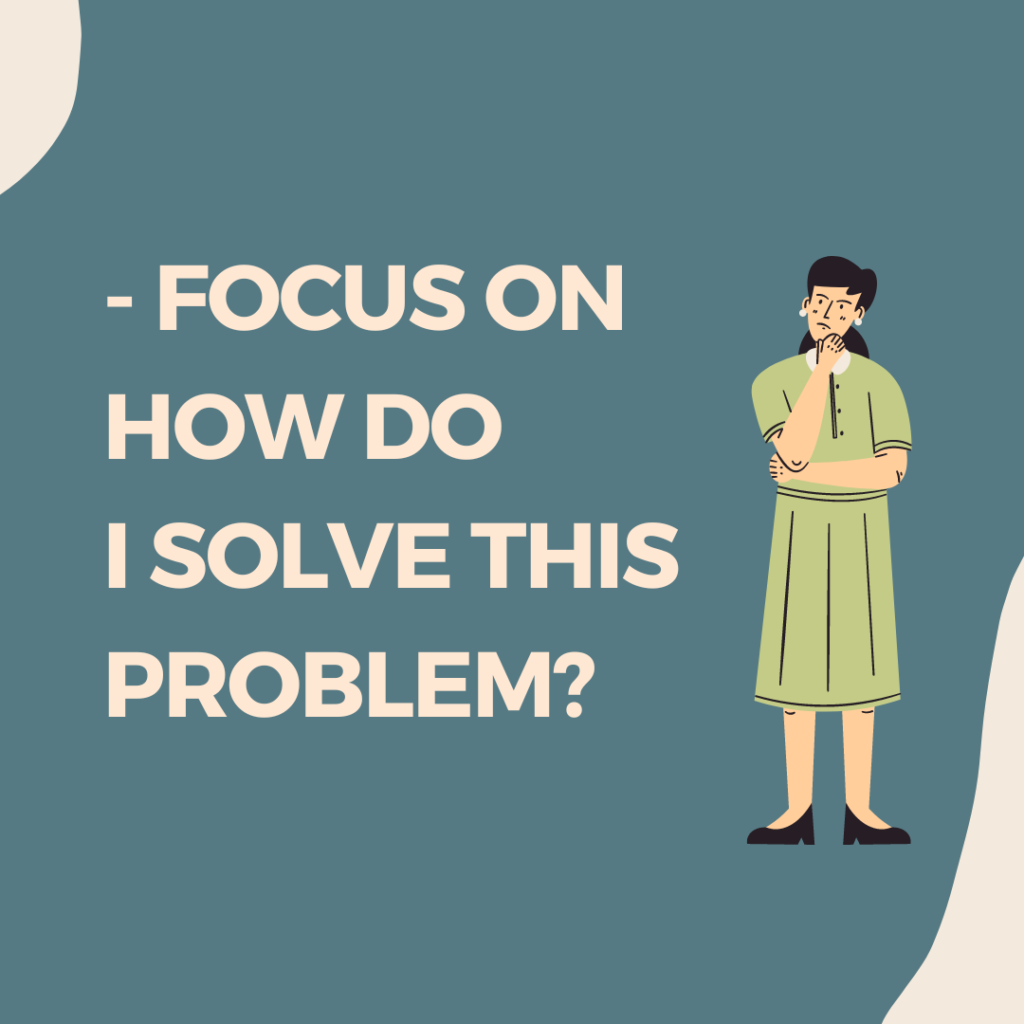
- Evaluate the Options
After generating potential solutions, we need to evaluate each option. Consider the pros and cons of each solution and determine which one is the most feasible and effective.
- Take Action
Once we have identified the best solution, it is time to take action. Break down the solution into manageable steps and create a plan to achieve it. Taking action can help us feel empowered and in control of our situation.
- Seek Support
Sometimes, we need help to find solutions to our problems. It is important to reach out to friends, family, or professionals for support and guidance. Sometimes, just talking through our problems with someone else can help us gain a fresh perspective and find new solutions.

